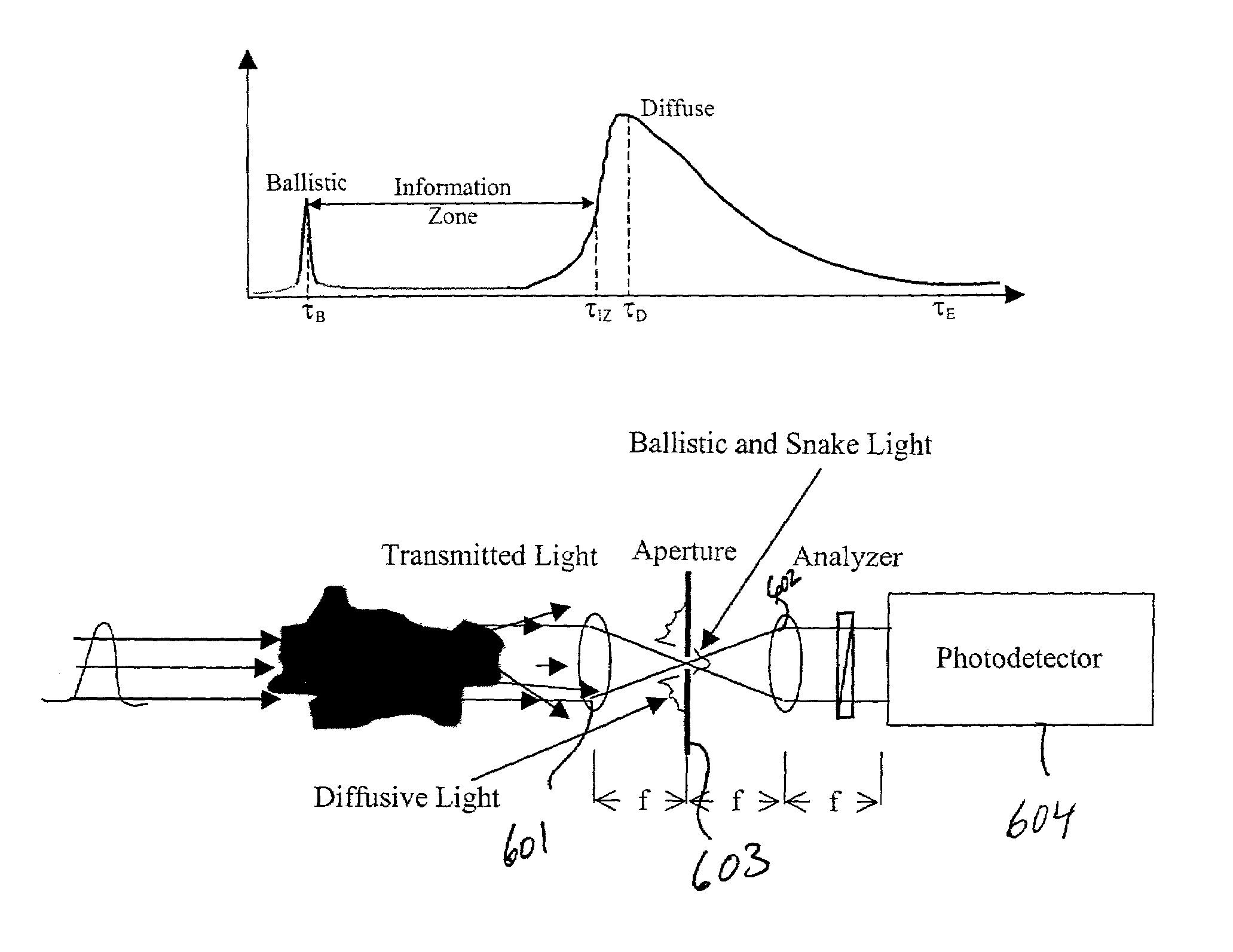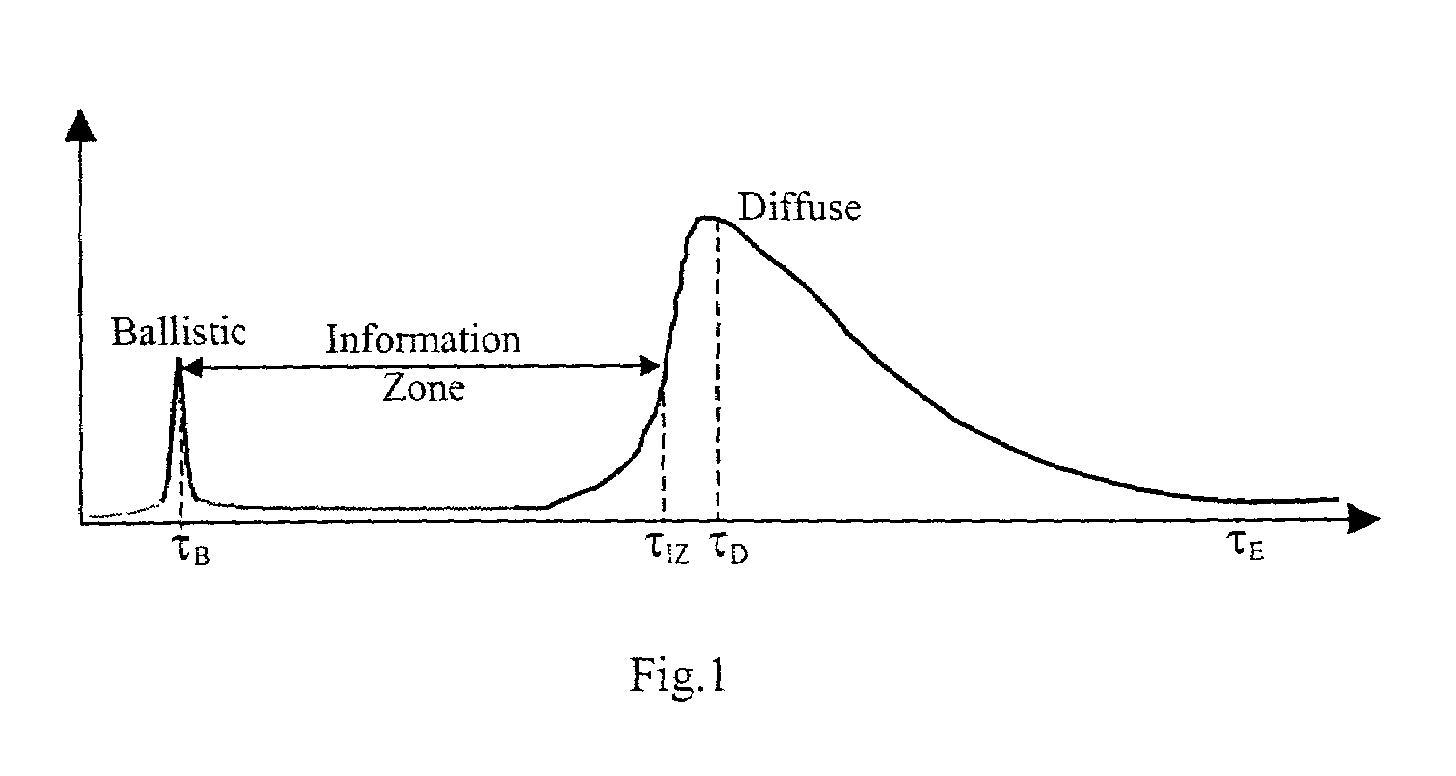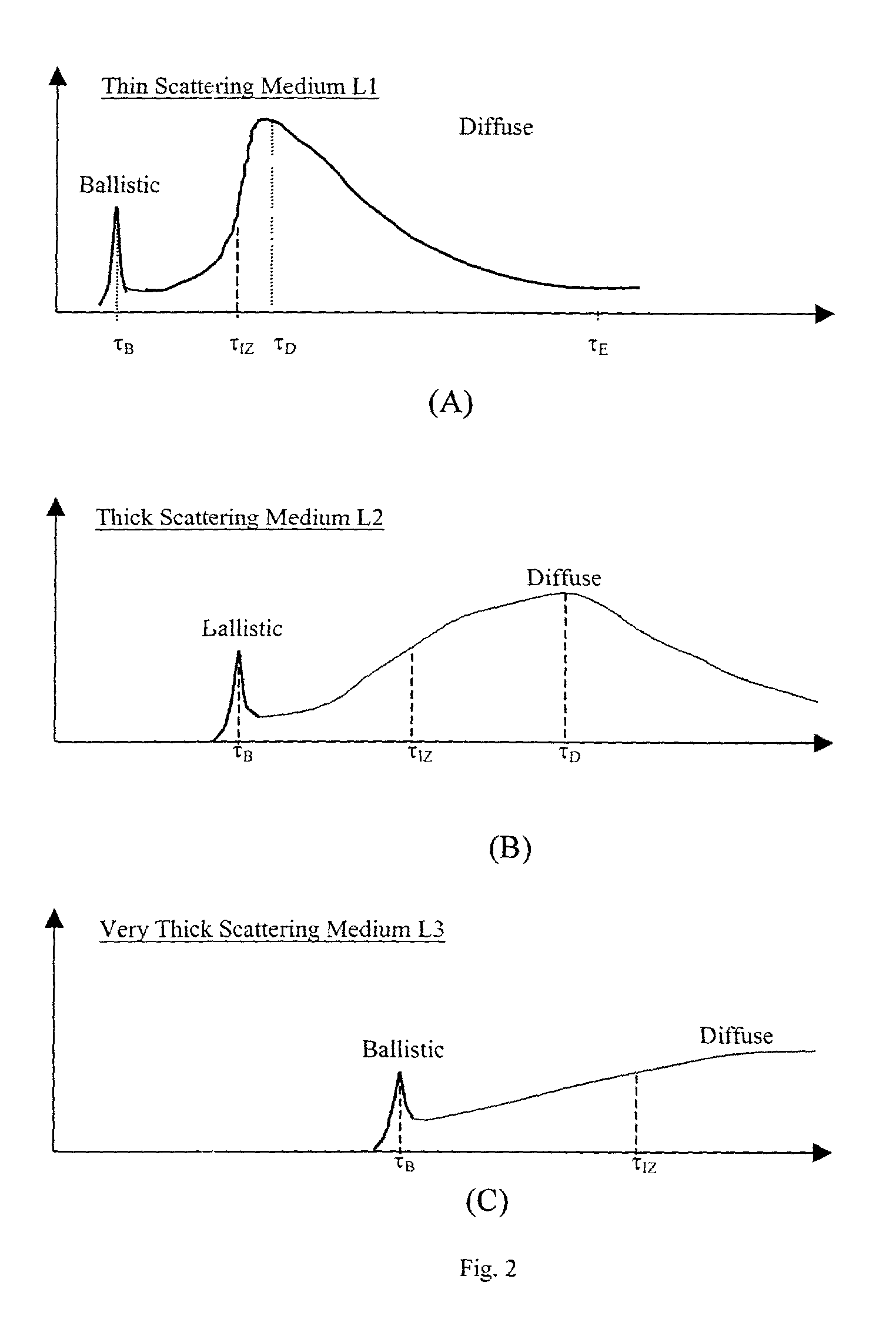Methods of improving line of sight wireless optical communication through adverse environmental conditions
a technology of adverse environmental conditions and wireless optical communication, applied in multiplex communication, optics, instruments, etc., can solve the problems of clutter and information mutilation, limited bandwidth of these types of transmissions, and high rates, so as to improve the signal-to-noise ratio, reduce the diffusive component, and add to background noise
- Summary
- Abstract
- Description
- Claims
- Application Information
AI Technical Summary
Benefits of technology
Problems solved by technology
Method used
Image
Examples
Embodiment Construction
[0048]Preferred embodiments of the present invention will be described herein below with reference to the accompanying drawings. In the following description, well-known functions or constructions are not described in detail since they would obscure the invention in unnecessary detail.
[0049]The present invention provides methods of improving wireless optical communication through adverse environmental conditions, such as clouds, fog, smog, and smoke in the atmosphere, and murky water in the sea. The information is encoded using light of appropriate wavelengths, and is transmitted as a serial train of data, or in parallel as a two-dimensional array. When transferred, light undergoes multiple scattering by the local inhomogeneities in the index of refraction due to the presence of scattering particles in clouds, fog, smog, smoke, water, and aerosol that may be present in the environment. Scattering breaks up light into ballistic, snake, and diffusive components. The early light, compr...
PUM
 Login to View More
Login to View More Abstract
Description
Claims
Application Information
 Login to View More
Login to View More - R&D
- Intellectual Property
- Life Sciences
- Materials
- Tech Scout
- Unparalleled Data Quality
- Higher Quality Content
- 60% Fewer Hallucinations
Browse by: Latest US Patents, China's latest patents, Technical Efficacy Thesaurus, Application Domain, Technology Topic, Popular Technical Reports.
© 2025 PatSnap. All rights reserved.Legal|Privacy policy|Modern Slavery Act Transparency Statement|Sitemap|About US| Contact US: help@patsnap.com



